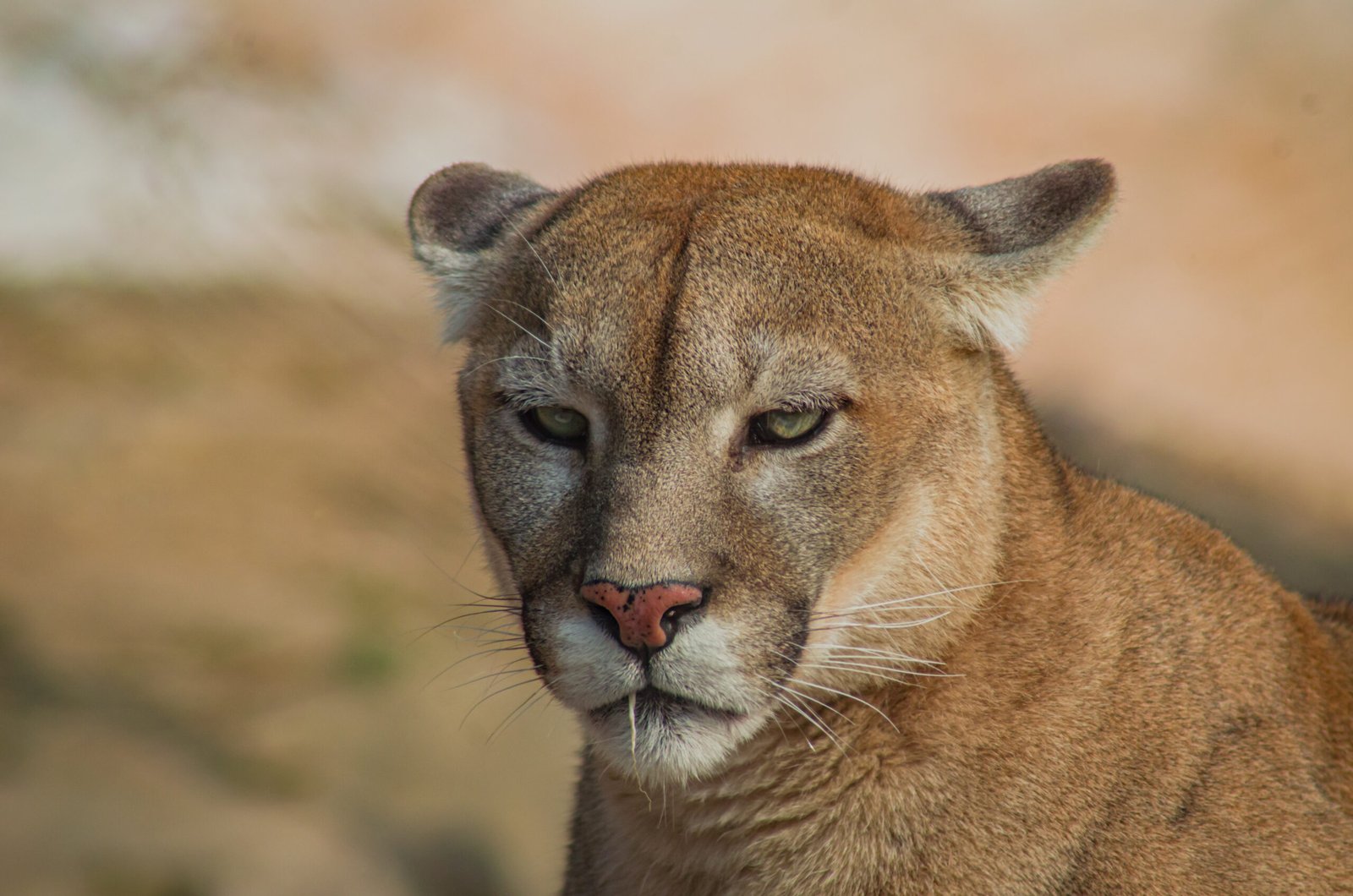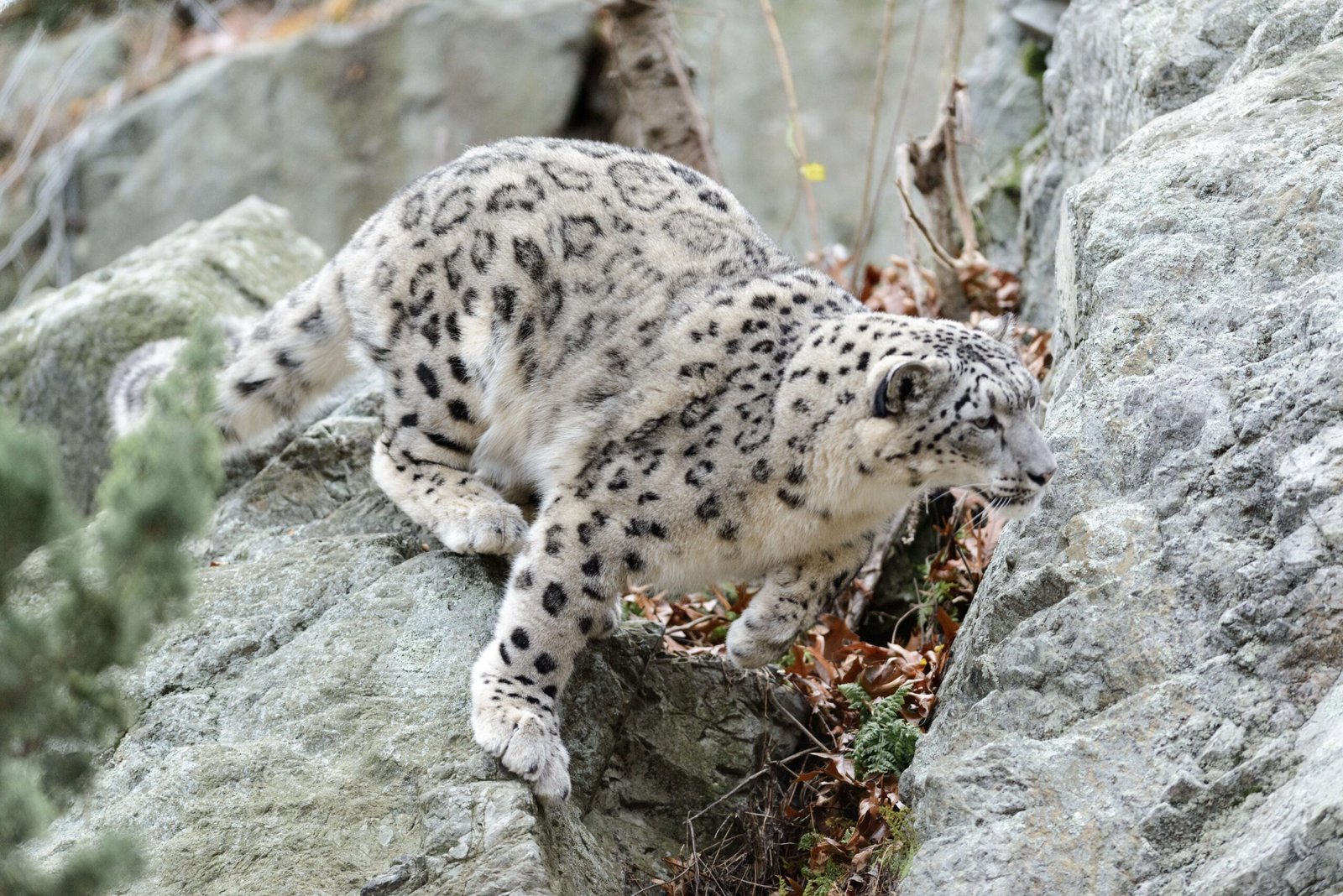Imagine standing in your backyard, gazing up at a two-story house. Now, picture a massive feline soaring clean over that rooftop with room to spare! Sounds unbelievable, right? Yet, nature’s most powerful cats are built for jaw-dropping acrobatics. Welcome to a wild gallery of seven big cats whose leaping feats defy gravity (and logic). Along the way, you’ll discover quirky habits, surprising stats, and feline flair that just might make you gasp. Ready to see which big cats could out-jump your house? Let’s leap in!
The Snow Leopard: Master of Mountain High Jumps

Snow leopards are basically the parkour champions of the Himalayas, leaping up to 50 feet in a single bound—way higher than your average two-story home! Their long, muscular hind legs and springy spine give them the thrust to clear rocky cliffs and icy chasms like it’s nothing. Despite living in some of Earth’s harshest terrain, these fluffy, ghostlike cats move with shocking grace. They’ve even been spotted launching themselves across ravines that would make a mountain goat nervous. Next time you see a snow leopard photo, just picture it flying high above your roof—no trampoline required!
The Puma (Mountain Lion): The Silent Springboard

Pumas, also called cougars or mountain lions, are North America’s silent stalkers—and their leap is pure superhero material. These cats can spring up to 18 feet straight into the air and cover 40 feet horizontally in one jump. That’s like jumping clear over a pickup truck standing on its end! Their powerful back legs act like coiled springs, launching them after deer, birds, or just a better view. When a puma leaps, you almost expect to hear a comic book “whoosh!” sound effect.
The Jaguar: Explosive Power in Every Leap

Don’t let their stocky build fool you—jaguars are shockingly explosive leapers. In the steamy jungles of South America, they use their muscular legs to leap 10 feet vertically, easily topping a two-story wall if they wanted to. Their thick, compact bodies are like living battering rams, giving them not only leaping power but also the ability to crash through underbrush or pounce on prey from above. If jaguars played basketball, they’d never miss a slam dunk.
The Cheetah: Not Just Speed—Sky-High Jumps

We all know cheetahs for breaking land speed records, but their jumping game is just as fierce. These spotted sprinters can leap 20 feet forward and 10 feet high, clearing obstacles with the same explosive energy they use for chasing gazelles. Their long, flexible spines act like springs, and their lightweight build is perfect for catching air. Imagine a cheetah using its supercharged legs to leap over your garage—now that’s extreme home makeover!
The Lion: The King’s Surprising Vertical Leap

While lions may seem bulky and grounded, don’t underestimate the king’s vertical leap. Adult lions can jump up to 12 feet high and cover 36 feet in a single stride—enough to clear most backyard fences with ease. In the wild, this jump helps them ambush prey or escape danger. Their powerful legs are packed with muscle, and when a pride is on the hunt, you’ll see these majestic cats launching themselves with thunderous strength. It’s no wonder they rule the savanna!
The Leopard: The Stealthy Acrobat

Leopards are the ninjas of the cat world, known for their sneaky stealth and downright acrobatic jumps. They can leap 10 feet high and spring 20 feet forward, all while carrying prey twice their weight! In fact, leopards often haul their dinner into trees to avoid hungry scavengers, showing off their insane strength and balance. Watching a leopard leap is like seeing a gymnast in fur—effortless, silent, and totally mesmerizing.
The Tiger: Jungle Powerhouse on the Prowl

Tigers, the largest of all big cats, don’t just rely on size—they’ve got serious jump skills too. With a running start, a tiger can leap 16 feet vertically and up to 30 feet horizontally. That’s taller than most first-floor windows! Their huge, muscular bodies might look heavy, but their powerful haunches turn them into living catapults when they’re chasing prey or crossing streams. Tigers may be stealthy, but their leaps are nothing short of thunderous.
Leaping Over Obstacles: The Art of Escape

Big cats aren’t just show-offs—they leap for life! Whether it’s escaping predators or clearing rivers, their leaping ability is key to survival. Think of a snow leopard bounding over a 40-foot chasm or a puma clearing a log to avoid detection. These skills make them nearly unstoppable in the wild, leaving would-be threats shaking in their boots (if they wore any).
Muscles in Motion: The Secret Behind the Spring

Ever wondered how these cats pull off such insane jumps? It’s all in the muscles. Big cats have supercharged hind legs packed with fast-twitch fibers—think of them as built-in rocket boosters. Their long tails act like rudders, helping them balance mid-leap. When they launch, it’s like watching a coiled spring explode into action.
Tails: Not Just for Looks!

Those long, swishy tails aren’t just for looking fancy. A big cat’s tail works like a tightrope walker’s balancing pole, keeping them steady as they leap through the air. Snow leopards, for example, often use their super-long tails to help land safely on steep cliffs or icy ledges. It’s nature’s way of ensuring their acrobatics end with a perfect landing.
Eyes on the Prize: Laser-Sharp Vision

Big cats are equipped with vision that would put night-vision goggles to shame. Their incredible eyesight helps them judge distances precisely, so they know exactly when and where to leap. Whether it’s a cheetah zeroing in on a gazelle or a leopard aiming for a tree branch, their focus is laser-sharp—no missteps allowed.
Stealth and Surprise: When Leaping Is Hunting

For many big cats, leaping isn’t just for show—it’s a sneaky hunting tactic. Leopards and tigers often use sudden, explosive jumps to ambush prey, catching animals off guard. When you’re a stealthy hunter, the element of surprise is everything, and a single leap can mean the difference between feast and famine.
Big Cats vs. Human Athletes: No Contest!

If you think Olympic high jumpers are impressive, big cats make them look like beginners. The world record for the men’s high jump is just over 8 feet—less than what a puma manages without breaking a sweat! These cats would easily win gold in any backyard Olympics, leaving humans in the dust.
Big Cats and Domesticated Relatives: The Leaping Connection

Ever see your housecat leap onto the fridge? That’s a mini version of what these big cats do—just scaled up! Domestic cats share the same muscle structure and springy spine, making them little acrobats in your living room. Next time your kitty nails a jump, remember: it’s in their DNA.
Wild Training: Leaping Lessons from Cubhood

Big cat cubs don’t start out as super-jumpers—they learn by playing! Cubs practice leaping on siblings, pouncing on leaves, and scrambling up rocks. This playtime is actually essential training, helping them build strength and perfect their timing before they tackle real-life jumps in the wild.
Tree Top Masters: Vertical Living

Leopards and jaguars are tree-climbing pros, and their leaping skills give them VIP access to the treetops. A single jump can carry them from the ground to a high branch, where they stash food or nap away from danger. In rainforests, a jaguar’s leap is the ticket to dinner and safety all at once.
Extreme Weather, Extreme Jumps

Snow leopards leap across snowy cliffs, tigers spring through swampy jungles, and lions bound over tall grasses. Each cat has evolved to leap in its own harsh environment, turning obstacles into launchpads. Their jumps aren’t just impressive—they’re tailored to survival in all kinds of weather.
Leaping for Love: Mating Season Acrobatics

During mating season, big cats sometimes show off their acrobatics to attract mates. Males might leap to demonstrate strength or agility, while females watch and judge their skill. It’s like a wild version of a dance-off, with the highest jumpers earning the most attention.
Soundless Landings: The Art of Stealth

What’s more impressive than a high jump? Landing without a sound. Big cats have super-soft paw pads and flexible joints, allowing them to hit the ground silently—even from great heights. This stealthy landing is their secret weapon, letting them sneak up on prey or slip away unnoticed.
Record-Breaking Feats: Who Jumps the Highest?

While all these cats are high-flyers, the snow leopard tops the charts for the longest recorded leap—about 50 feet! Pumas come next, with their unbelievable vertical and horizontal range. Each species has its own specialty, but together, they’re the undisputed leaping legends of the animal kingdom.
When Leaping Fails: The Risks of Wild Acrobatics

Not every leap ends in victory. Sometimes, a misjudged jump means a missed meal—or a dangerous fall. Young cats especially have to learn the hard way, practicing their leaps until they master the art. In the wild, the risk is real, but the rewards are worth it.
Saving the Super-Jumpers: Conservation Matters

Sadly, many of these high-flying cats are endangered. Habitat loss and poaching threaten their survival—and their leaping grounds. Protecting these big cats means preserving the wild spaces where they can leap, hunt, and live free. Every leap they make is a testament to their resilience.
How High Could Your Cat Jump If It Were a Big Cat?

Ever wondered what your housecat could do if it had super-sized muscles? If scaled up, your kitty could out-jump your neighbor’s dog, your backyard fence, and maybe even your mailbox! Next time your cat leaps onto the couch, imagine it flying over the roof—now that’s a wild thought.
Which Big Cat Would You Bet on in a Leaping Contest?

If you could stage a leaping contest between these big cats, who do you think would win? Snow leopard for distance, puma for vertical, or cheetah for style? It’s a toss-up—and a fun way to appreciate just how special these wild jumpers really are.

Suhail Ahmed is a passionate digital professional and nature enthusiast with over 8 years of experience in content strategy, SEO, web development, and digital operations. Alongside his freelance journey, Suhail actively contributes to nature and wildlife platforms like Feline Fam, where he channels his curiosity for the Feline into engaging, educational storytelling.
With a strong background in managing digital ecosystems — from ecommerce stores and WordPress websites to social media and automation — Suhail merges technical precision with creative insight. His content reflects a rare balance: SEO-friendly yet deeply human, data-informed yet emotionally resonant.
Driven by a love for discovery and storytelling, Suhail believes in using digital platforms to amplify causes that matter — especially those protecting Earth’s biodiversity and inspiring sustainable living. Whether he’s managing online projects or crafting wildlife content, his goal remains the same: to inform, inspire, and leave a positive digital footprint.






